Types and varieties of balsam
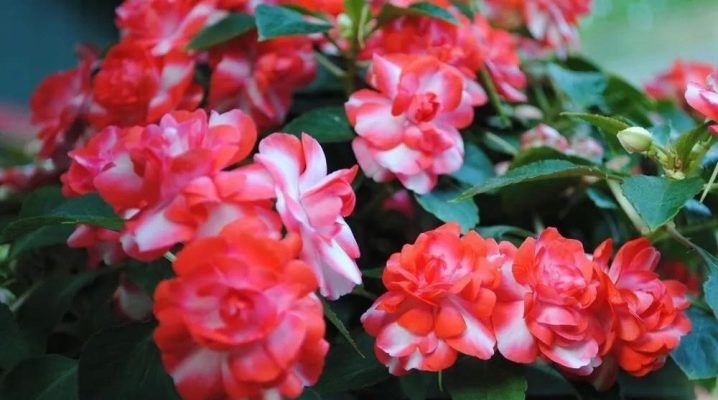
For many, a pot of balsam on the window is a picture of a typical Russian village or dacha. However, this wildly blooming beauty hails from the distant subtropics of Asia and Africa. It is worth considering why he was so fond of domestic flower growers.
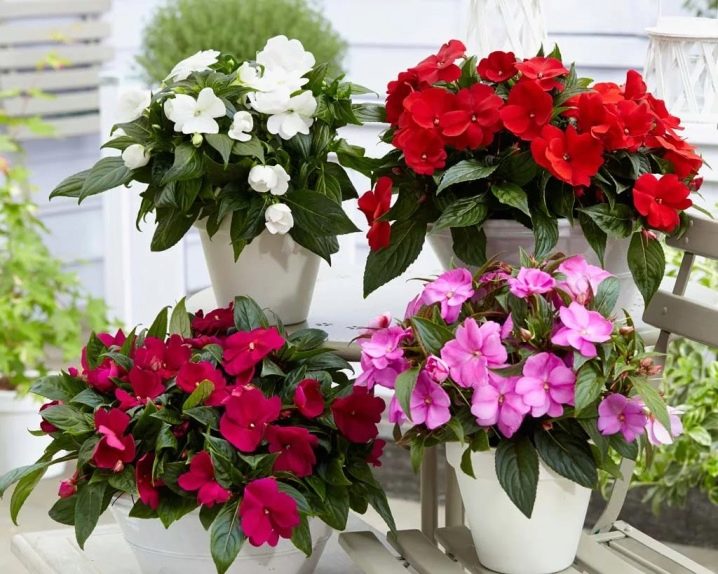
Peculiarities
Balsam is not the only name for a houseplant that is well known to many. It is known as "Touchy". This is due to the fact that during the ripening period, the seed pods of the flower burst and crumble from any touch and even a breath of wind. During the flowering period, many small inflorescences appear on the balsam in the evening. They are white, orange, bright scarlet, but what unites all shades is that they seem to give a small glow. This also determined another name for balsam - "Ogonyok".
Finally, due to the need for frequent watering, as well as the ability to release sugar dew on the leaves immediately after it and on the eve of rain, the plant is also called "Vanka wet". In natural conditions, balsam is found in the subtropics of India, North America, and Africa. The historical homeland is the island of Zanzibar, the territory of Central Asia, Africa. In the 19th century, the plant was brought to Russia. The description of the plant necessarily includes a mention of the unpretentiousness of the plant and its abundant flowering.
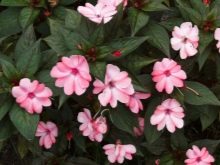
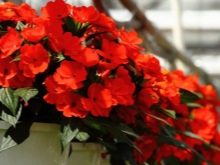

Varieties
Balsam has about 500 varieties. Despite the varietal diversity, balsam can be divided into 2 large groups such as:
- annuals (usually grown in flower beds);
- perennials (grown as indoor potted plants).

Let's consider the most popular varieties.
- Waller's balm. This variety is distinguished by a high (50 cm) bush, so it is often used in landscape design. Stems are erect with oval-shaped leaves of green or brownish tint. This variety is warm and light-loving, which you need to know about when choosing a "place of residence" for a plant. It blooms profusely, inflorescences are both one-color and two-color. Walter's cultivar is the basis of the many hybrid forms of Impatiens. These include such varieties as "King Kong", "Bruno".
However, it is fair to say that the Waller variety also includes shorter varieties that are convenient to grow indoors, for example, the Orange varieties.
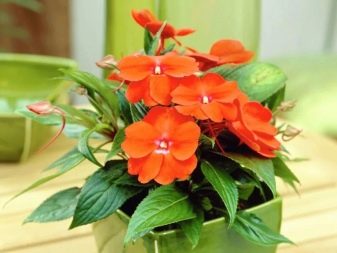

- Ampel varieties. These include "Tumbler", "Scarlet", "Violet", "Rose Sstar", "White". These varieties are united by compact size and flexibility of stems. The latter feature allows plants to be planted in hanging pots, from where they hang beautifully. Among them there are many hybrids that germinate well from seeds (impatiens "Acrobat F1", "Flash").
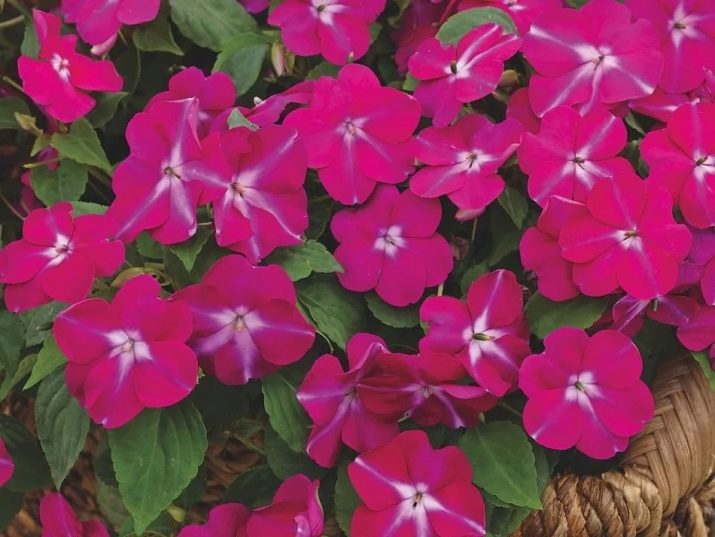
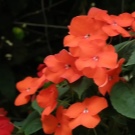
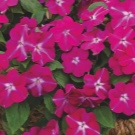

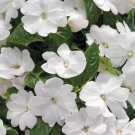
- New Guinea. This hybrid is easily recognizable by its large, bright inflorescences. It belongs to perennials that grow and bloom unpretentiously both indoors and in a flower bed. The leaves are large, dark green with yellow veins. It has immunity to most typical diseases and insect pests, and tolerates direct sunlight. For flowering, you need a "shock" portion of light and heat.
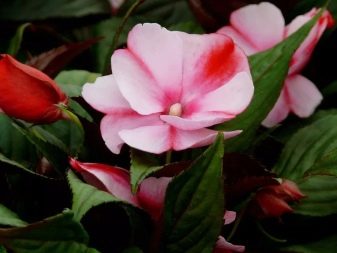
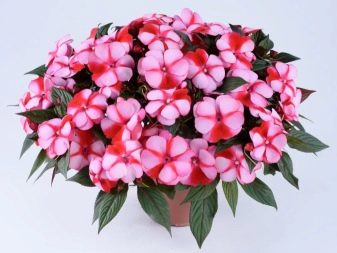
- "Kandy"... This variety appeared relatively recently, but won the hearts of flower growers with multi-colored exquisite inflorescences and unpretentious care. The bush is quite compact, up to half a meter in height. The leaves are "planted" on long petioles, and they themselves have an oblong pointed shape, the color is shades of green.The velvety inflorescences also have a high peduncle to the touch, which gives the plant an exquisite, even aristocratic appearance.
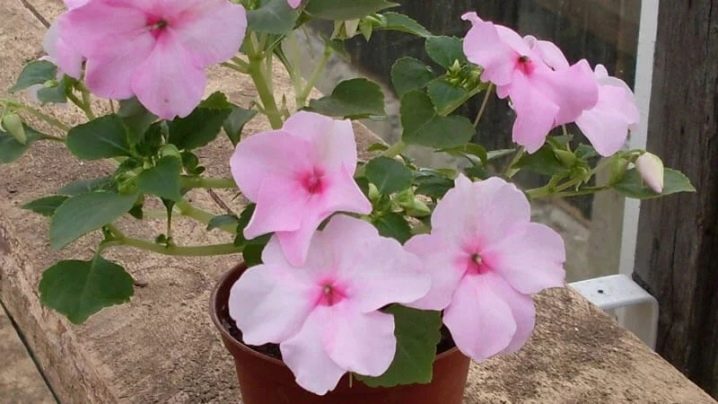
- "Athena red flame" (some manufacturers - "Athena Juno"). It is a terry variety with large, bright red inflorescences. An annual that is commonly grown as a houseplant. Outwardly, another terry variety is similar to "Athena" - "Aphrodite". The latter has bright red-white lush inflorescences.


- "Tom Samb Salmon". This is another terry perennial with lush pink inflorescences. It is relatively low (25 cm) and tolerates insufficient lighting well.
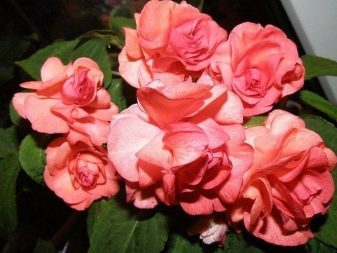
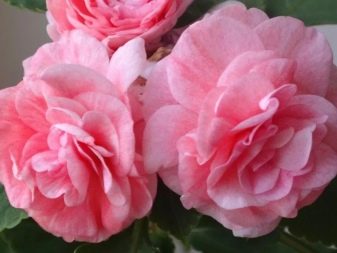
- Orchidaceous. It is an elegant plant with velvety, muted green leaves that have bright pink or red veins. The inflorescences are in the shape of shoes and resemble miniature orchid inflorescences, which determined the peculiarities of the name of the variety. Inflorescences are white, sometimes a yellowish or orange rim runs along the edge of the petals. The variety is resistant to spider mite infestation.
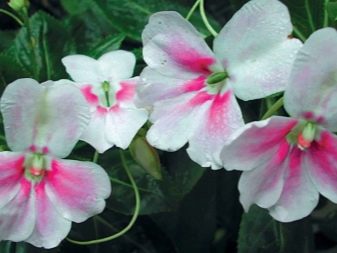
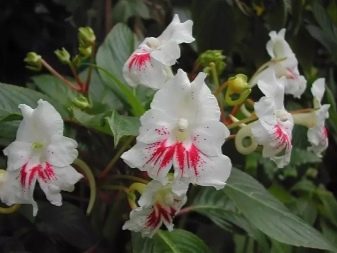
- "Tom Thumb". This variety delights with abundant flowering and type of inflorescences. During the flowering period, the bush is literally strewn with lush terry inflorescences, reminiscent of miniature inflorescences of peonies or lush roses. The petals are fluffy, velvety to the touch. The color of the inflorescences is diverse - from white, milky, pinkish to bright scarlet and maroon.
It needs good lighting, but it can grow and bloom both in partial shade and in dark areas, in which case the leaves and flowers will simply be smaller. Requires constant moisture.
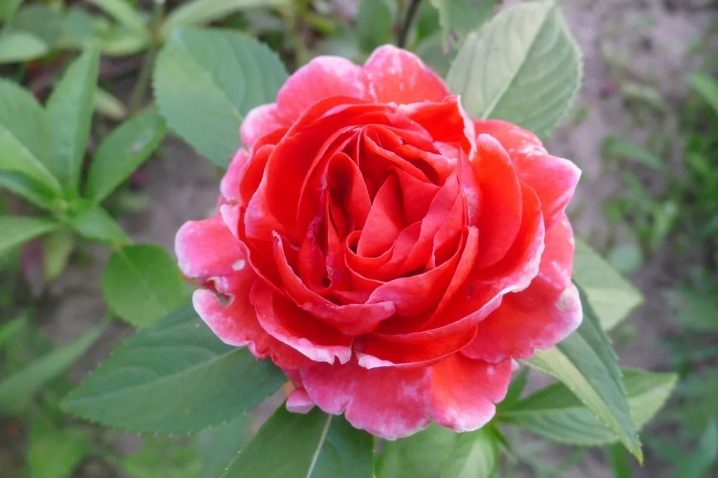
- "Cutie". This is a dwarf (no more than 20-25 cm in height) bush with a lush "crown". Looking at the smooth light green leaves and small inflorescences of white or pink color, it immediately becomes clear why the variety is named that way. The plant really looks cute, gentle and does not require much care. As a houseplant, it blooms almost all year round; it will delight with inflorescences all summer long in the flowerbed.
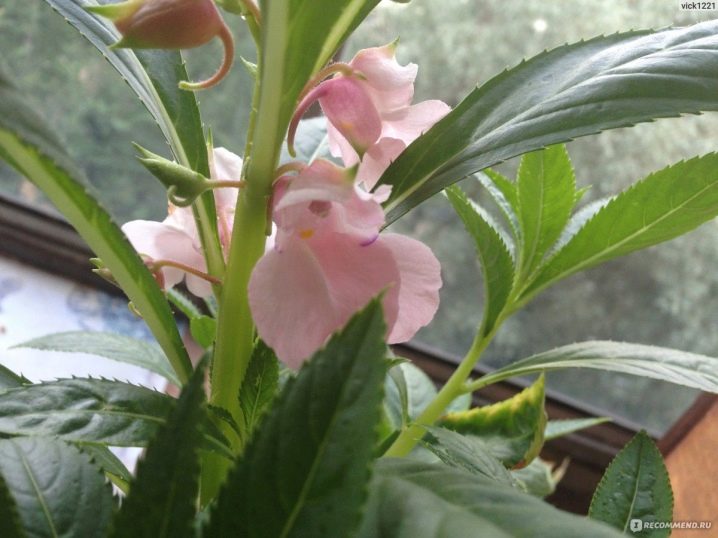
Care rules
The main thing to remember about balsam is that the plant loves light, warmth and abundant watering. Planting and care does not require special knowledge from the grower. Indoors, the light-loving "Spark" is best planted in a small pot, which can be placed on the windowsill on the south side. You can also see the window sills of the windows "looking" to the west and east. In the summer, in the midday heat, plants (especially young ones) better protected from direct sunlight. Blinds, translucent partitions or just a sheet of white paper will help with this.
It is better to refuse the location of "Impatient" on the windows facing north, or in the depths of the apartment far from the windows. With a lack of light, the plant will not bloom. Its appearance will also change - the stem will begin to stretch and become bare, as the lower leaves will fall off. If you choose the right place for balsam, it will bloom from early spring to late autumn, taking a "time out" only for the winter months.
As mentioned, the plant requires frequent watering. When the topsoil (at a depth of up to 1 cm) becomes dry, balsam should be "watered". In summer, it requires more frequent watering, in winter we reduce the number of waterings by a third. As a rule, in summer, the bushes are moistened daily, in winter - once every 2-3 days.
It is important to use settled water at room temperature. It should be soft, free of impurities.
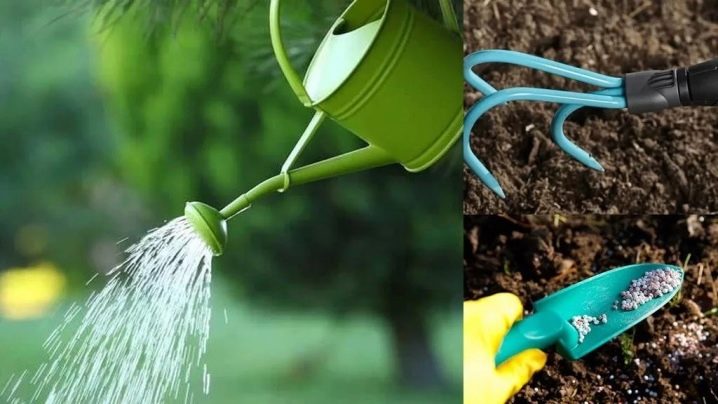
The appearance of a white "plaque" on the ground indicates the use of too hard water and, as a result, alkalization of the soil. In this case, you need to change the water, and replace the topsoil. Despite the love of balsam for moisture, it is important not to flood the plant. Standing water and liquid in the sump are no less destructive for him than drought. It is best to water in moderation but often.
If water accumulates in the pan after watering, drain it. Otherwise, you can provoke waterlogging of the soil, rotting of the roots and the death of the bush. Proper watering, the presence of a drainage layer and holes in the pot can avoid such problems. The "signal" for proper watering is the appearance of small dewdrops on the leaves immediately after watering. After a while, these drops are "sugared". The moisture protruding on the leaves can be observed only in the warm season. Before watering, it is advisable loosen the topsoil, which will ensure the flow of oxygen to the roots, will avoid stagnation of moisture on the soil surface.
It is better to water from a watering can with a thin spout, trying not to pour water on the leaves, inflorescences and root collar.
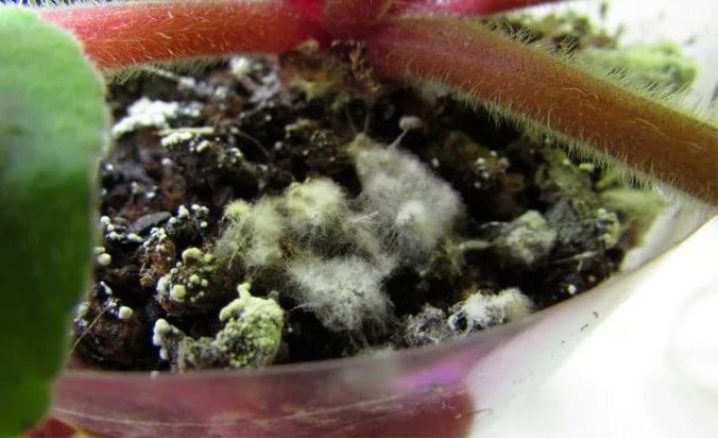
"Ogonyok" cannot stand the cold. In summer it is better to keep the temperature at + 25– + 28 ° C, in winter - not lower than + 18 ° C. At the same time, the heating batteries can quickly dry the roots of the plant, and the condensation on the windows can wet and cool the leaves of the plant. The optimum air humidity is 40-60%. If the air is too dry, the leaves may curl up and dry out.
The dry air problem is best avoided, otherwise the balsam may die. In winter, you can use humidifiers or place containers with water on the windowsill. Heating radiators can be covered with a damp cloth. The air around Impatiens (but not the bush itself) can be sprayed with a spray bottle.
Balsam is generally unpretentious to the composition of the earth. A versatile substrate for indoor plants is suitable. If the soil is prepared by hand, then mix in equal proportions turf soil, leafy soil, humus and sand, and also add some of the peat.
Before use, it is better to treat such a mixture with a strong disinfecting solution of potassium permanganate or warm it up at a temperature of at least + 200 ° C.

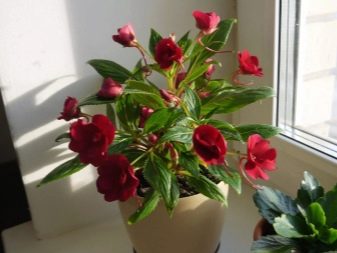
Besides the choice of soil, it is important to choose the right pot. The plant loves small containers so that the root system braids with an earthen ball. Only under this condition will the plant bloom. If, however, plant "Impatient" in an oversized pot, all his strength will be spent on building up roots. This means that you will wait for flowering for a long time, and it will be very scarce. In addition, in a large container, there is a high probability of soil acidification.
If not a new pot is used, it is also it is important to pre-disinfect. Make sure there are holes in the bottom of the pot. The first layer is covered with medium-sized pebbles, this will be drainage. Then comes the soil layer. You can also add a little charcoal to it, which has a disinfecting property.
Considering that the plant loves frequent watering, but does not tolerate stagnant moisture, it is logical to choose a pot with a high tray.
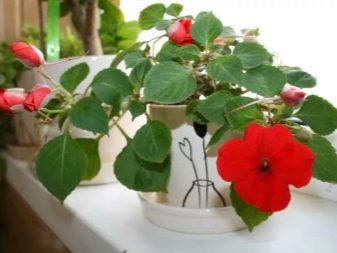

Since perennials are usually grown indoors, the plant needs periodic replanting. It is recommended to replant young bushes annually, each time choosing a pot slightly larger than the previous one. The plant should be repotted carefully without damaging the roots. Here it is more correct to speak about the transshipment method. By the way, if you only have a large pot or flowerpot, you can plant several balsam bushes in it at once. Deepen the cuttings at a distance of 5–7 cm from each other. If you use multi-colored varieties, then during the flowering period you will get a colorful flower bed, pleasing the eye with many shades.
Throughout the entire period of growth, the balsam is pinched, which allows you to get attractive bushes and abundant flowering. The top of the head should be pinched, and it is recommended to sprinkle the cut site with crushed charcoal. Pinching must be done in the spring. However, if in any other period the plant actively grows upward, without forming lateral shoots and not picking up buds, it should be pinched. It is also necessary to regularly remove dry, yellowed leaves, dried inflorescences. Pruning, along with periodic smooth turning of the pot with one or the other side to the sun, allows you to achieve a lush crown of balsam.

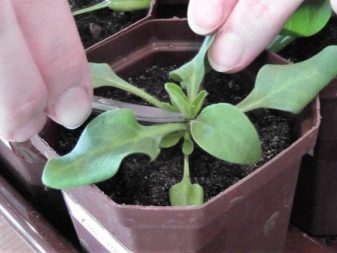
For a healthy and attractive appearance, "Ogonyok" needs additional feeding. It is brought in during the period from mid-spring to mid-autumn. Fit universal fertilizers for indoor flowers, as a rule, these are phosphorus and potash fertilizers. They are brought in every 2-3 weeks or as directed. But with nitrogenous fertilizers you need to be more careful - their excess leads to "fattening" of the bush. He grows greens to the detriment of inflorescences.
Improper care can provoke plant disease. Among the most common are cucumber and ring mosaic (a virus that does not respond to treatment, it is better to discard an infected bush in order to prevent damage to the rest), brown rot (characterized by root rot, thinning and drying of the stem), downy mildew (usually occurs when high air humidity). Among the pests, it is worth highlighting the spider mite. You can guess about the defeat of balsam by its stunted appearance, the appearance of small dots on the leaves, bite marks and a thin web. Treatment - shower and specialized means (Fitoverm, Actellik)

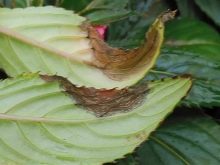
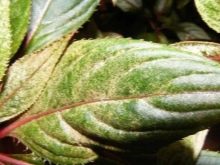
Beautiful examples in landscape design
Balsamic flower beds or rabatki will become a decoration of the personal plot. You can choose both taller bushes (40-50 cm high) and miniature (up to 30 cm).
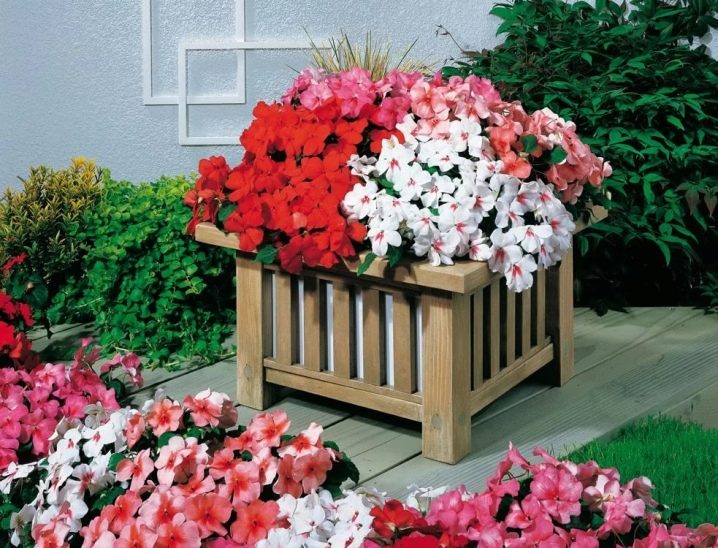
A multi-colored balsam will decorate a boring lawn or evenly trimmed shrubs, create additional graphics in the spirit of English gardens.
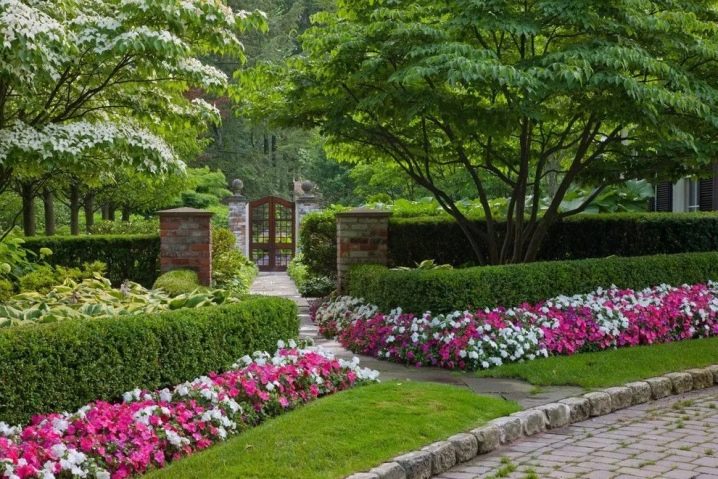
The love of "Vanka wet" for moisture and the splendor of the bushes makes it possible to use it to decorate ponds and garden springs. The main thing is that the place is not dark and damp.
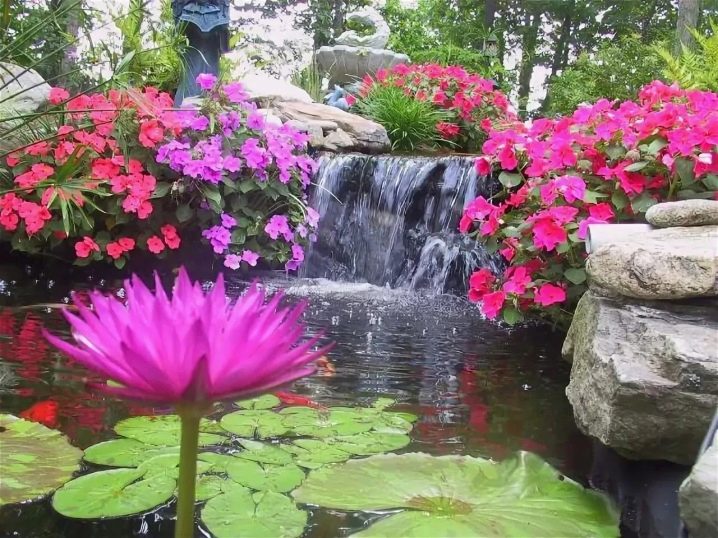
Ampel varieties can be planted in outdoor flowerpots, hanging pots or boxes. The latter will decorate terraces, outside windows, gates.

Finally, with the help of annuals, you can organize not traditional, but vertical flower beds.
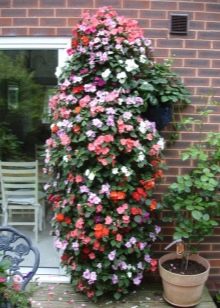
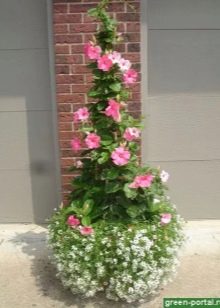
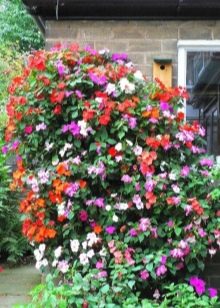
How to care for balsam, see below.































The comment was sent successfully.